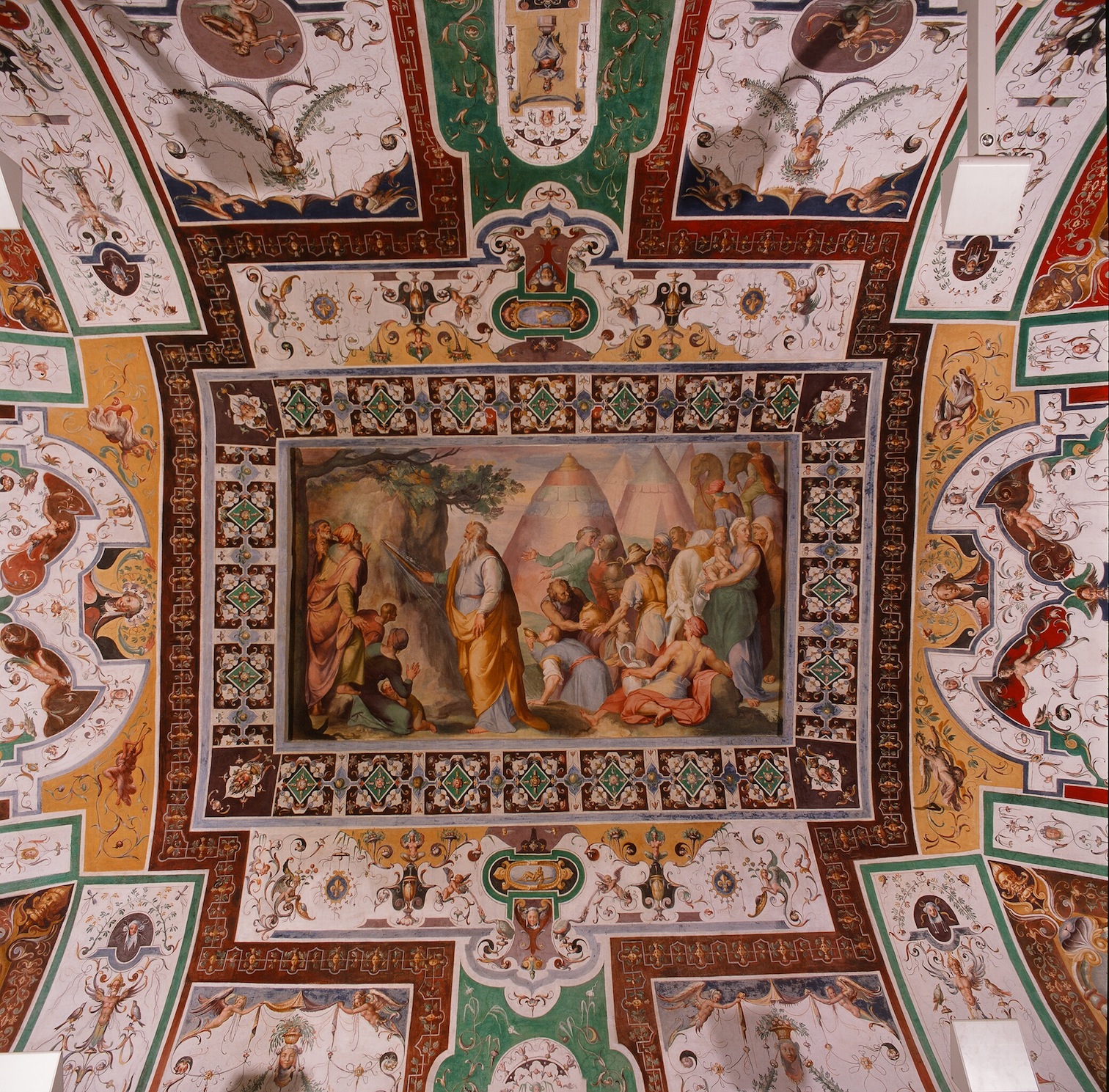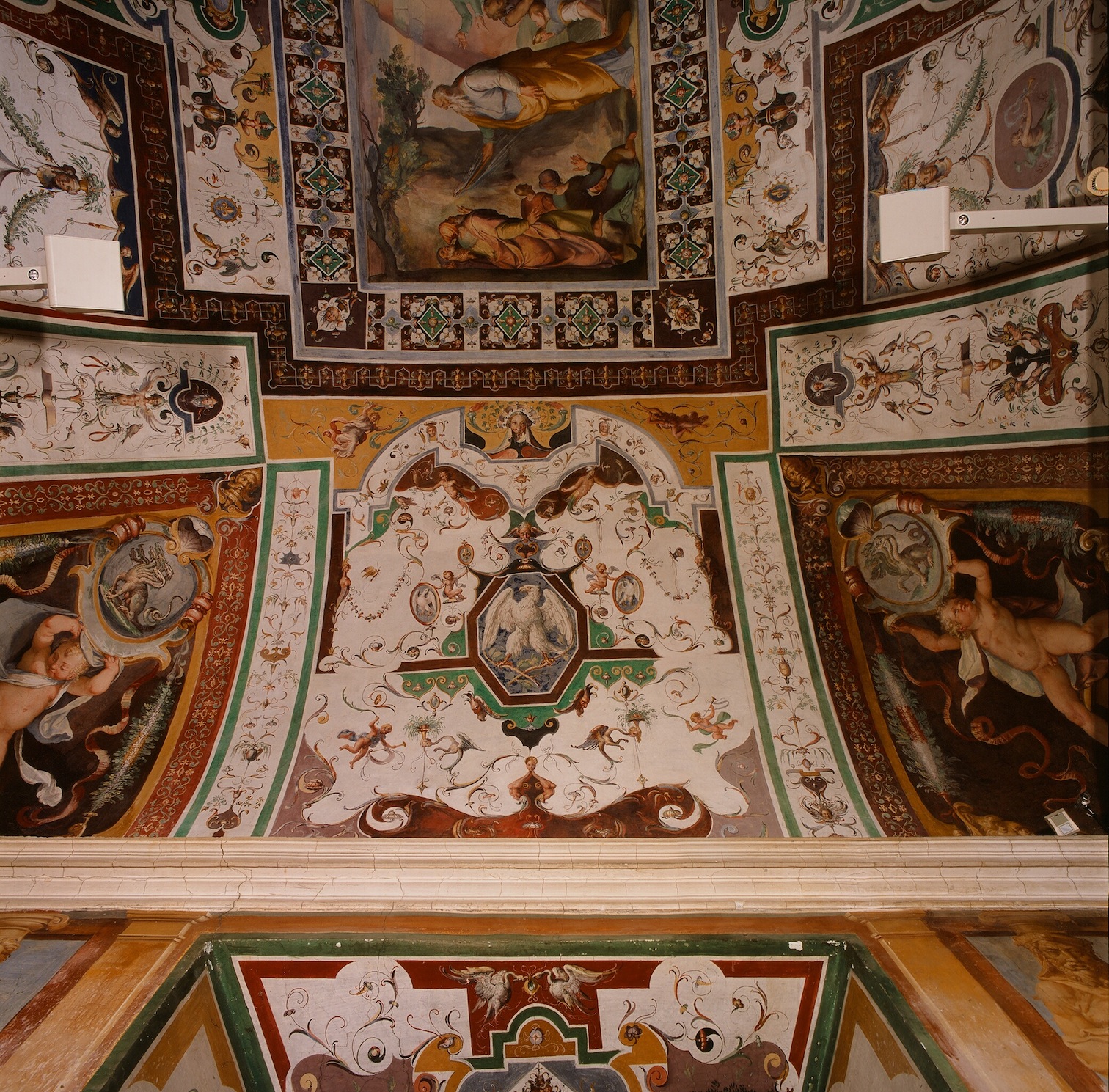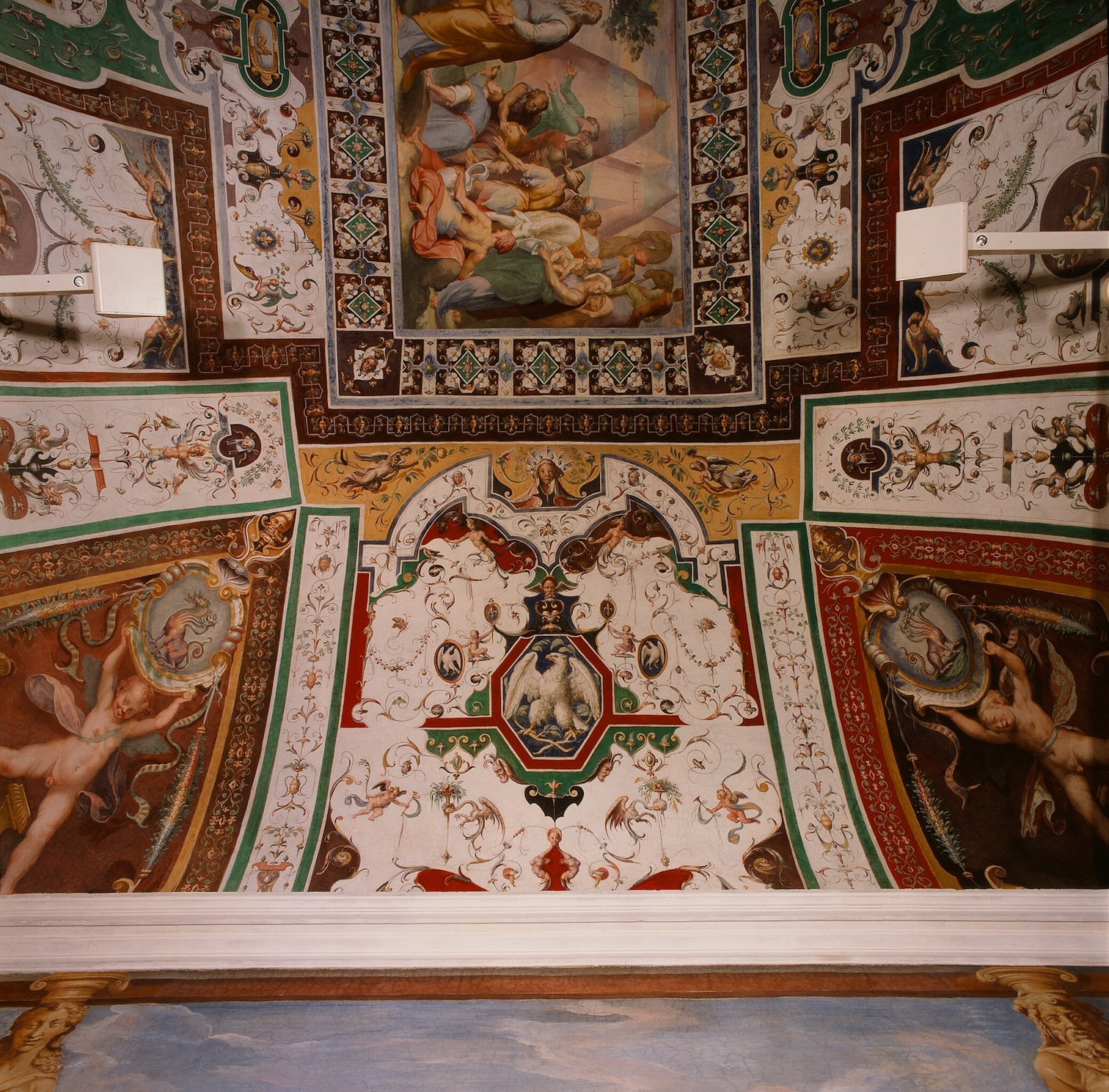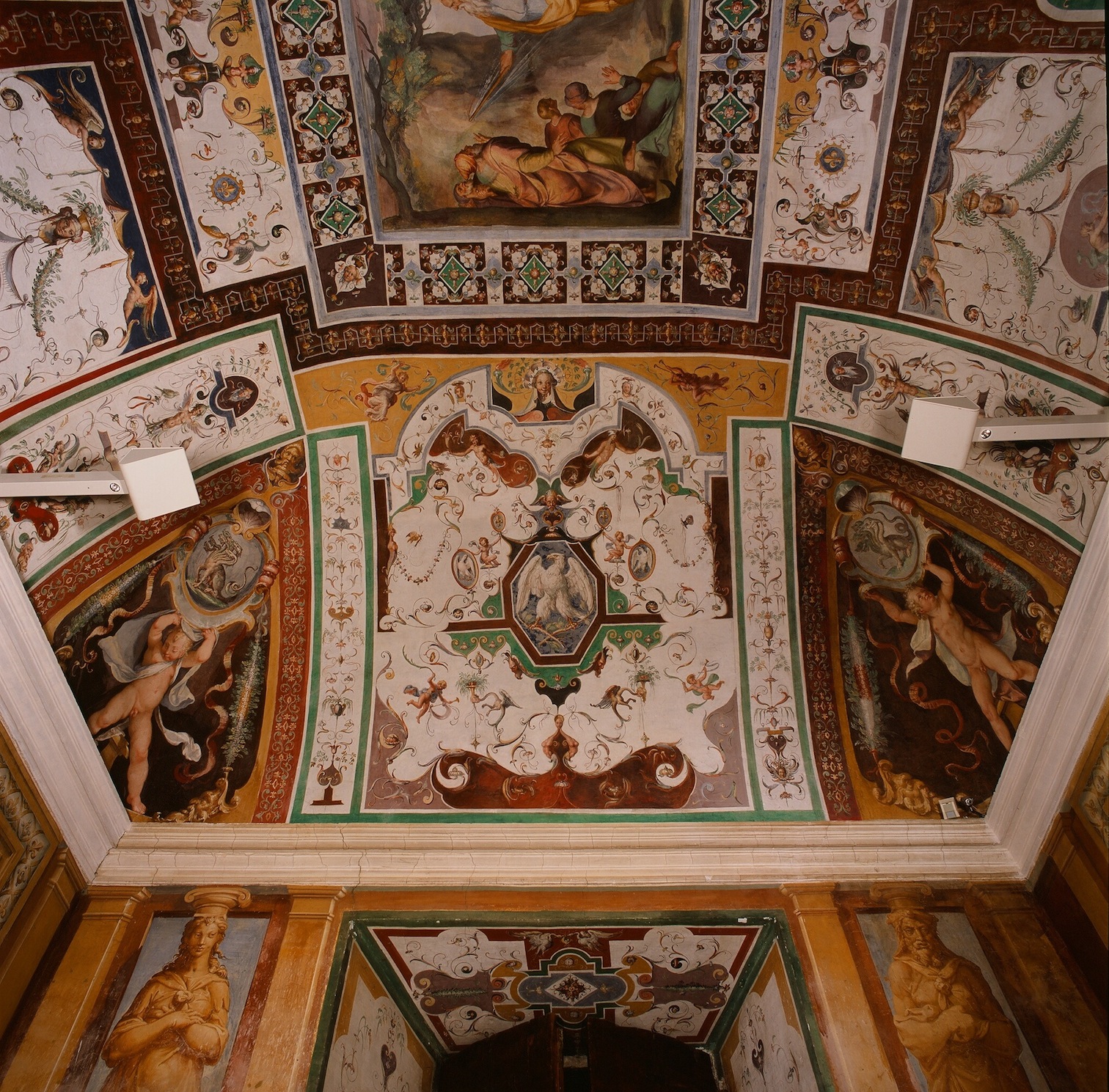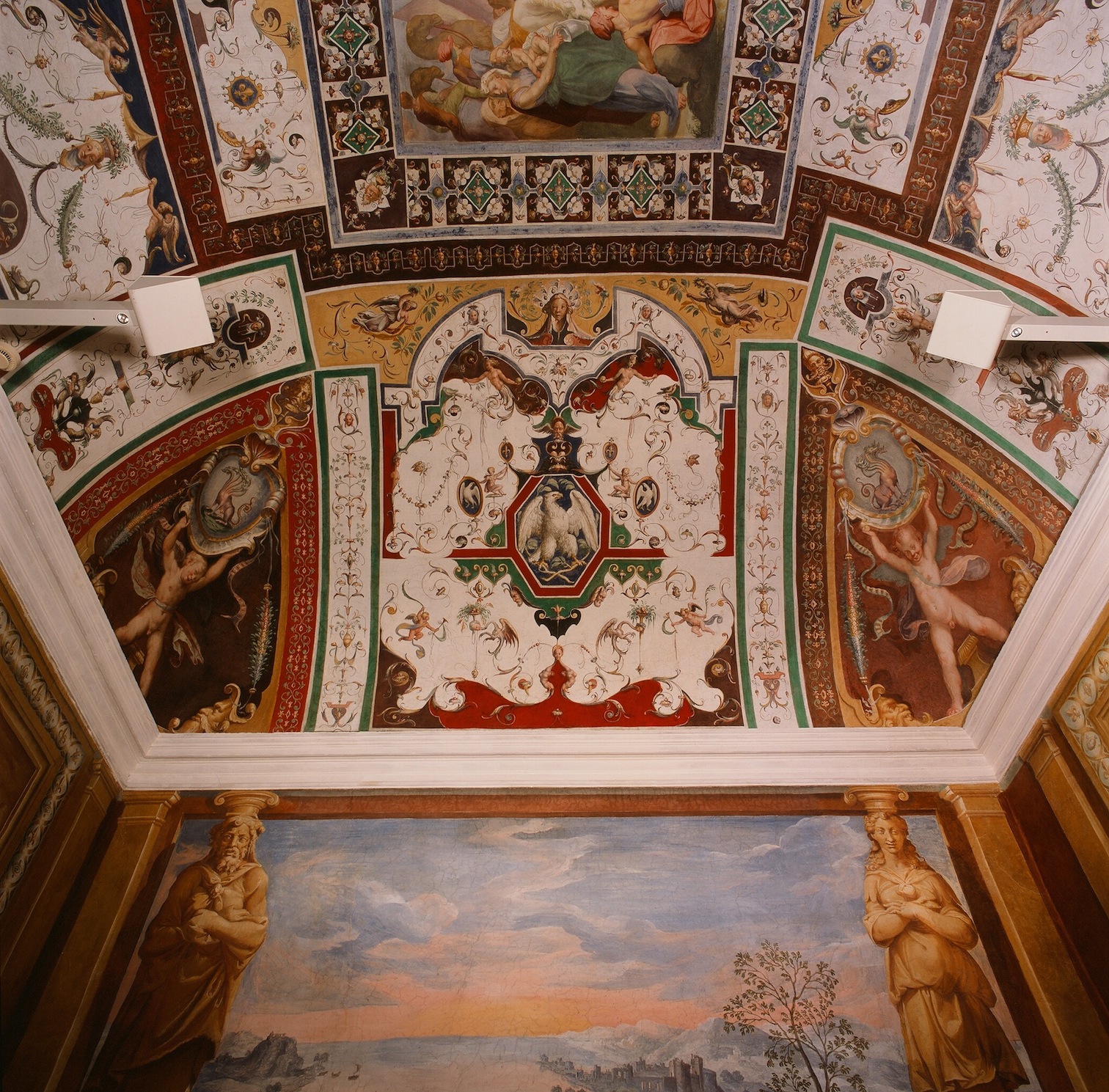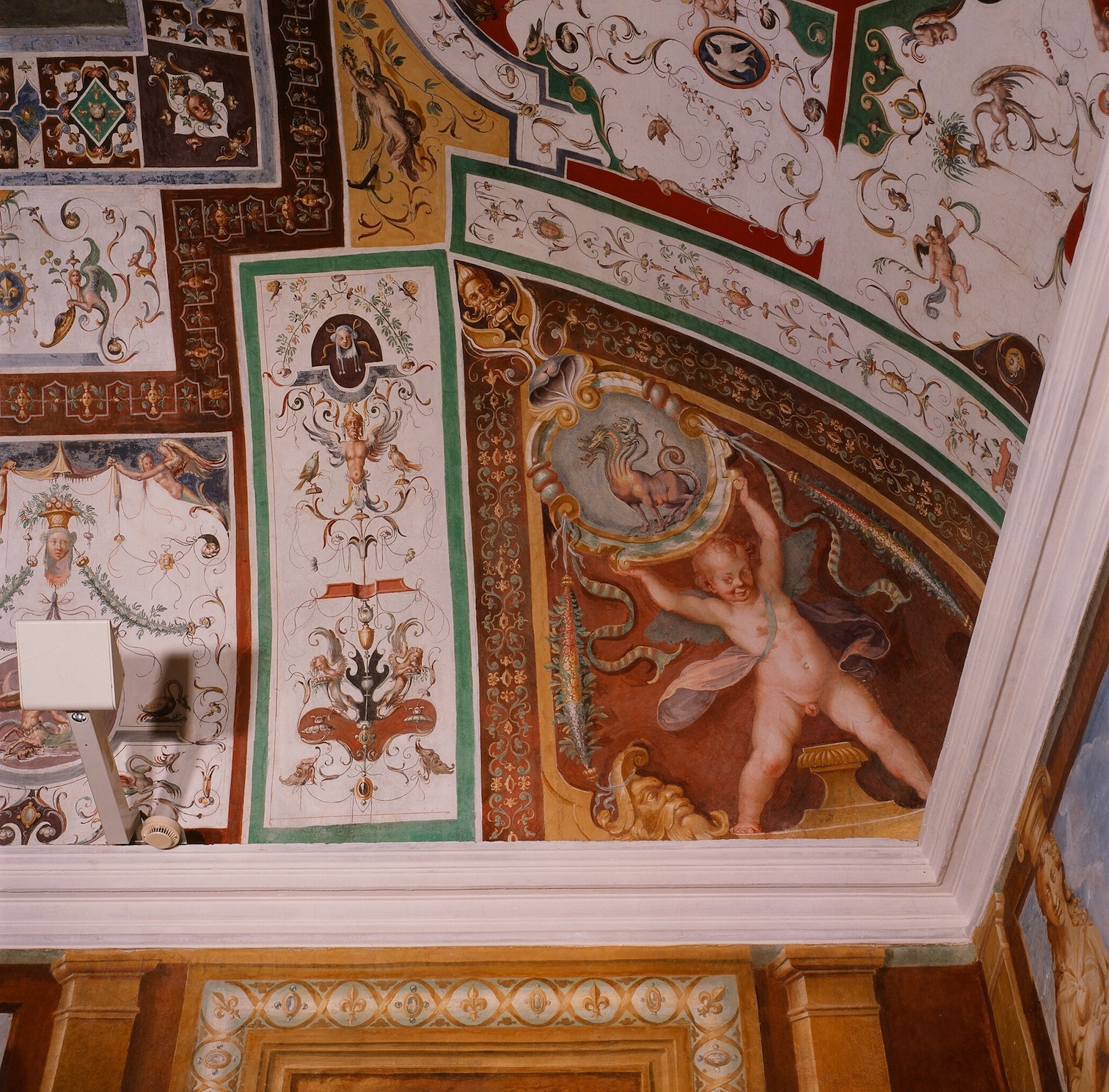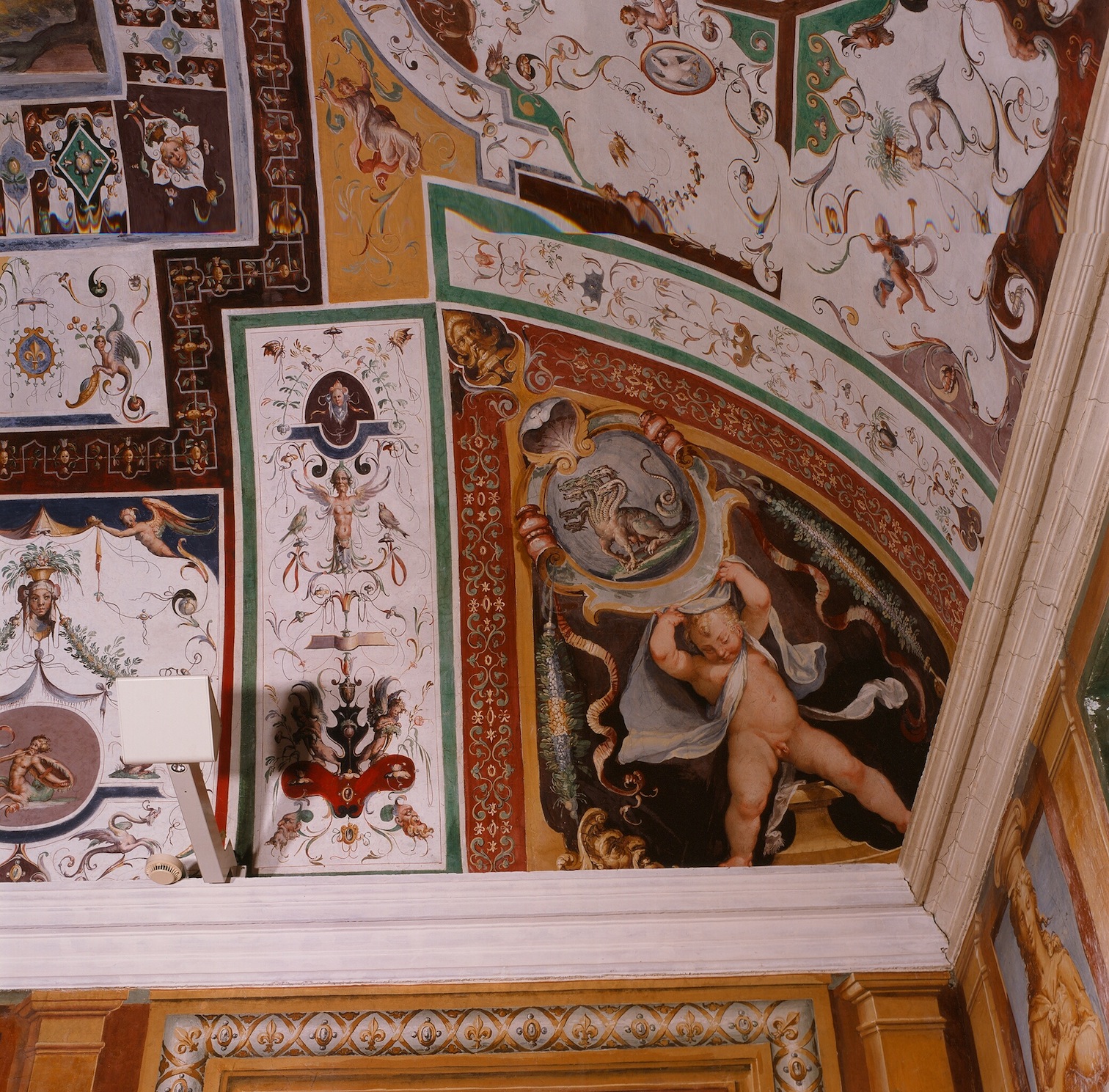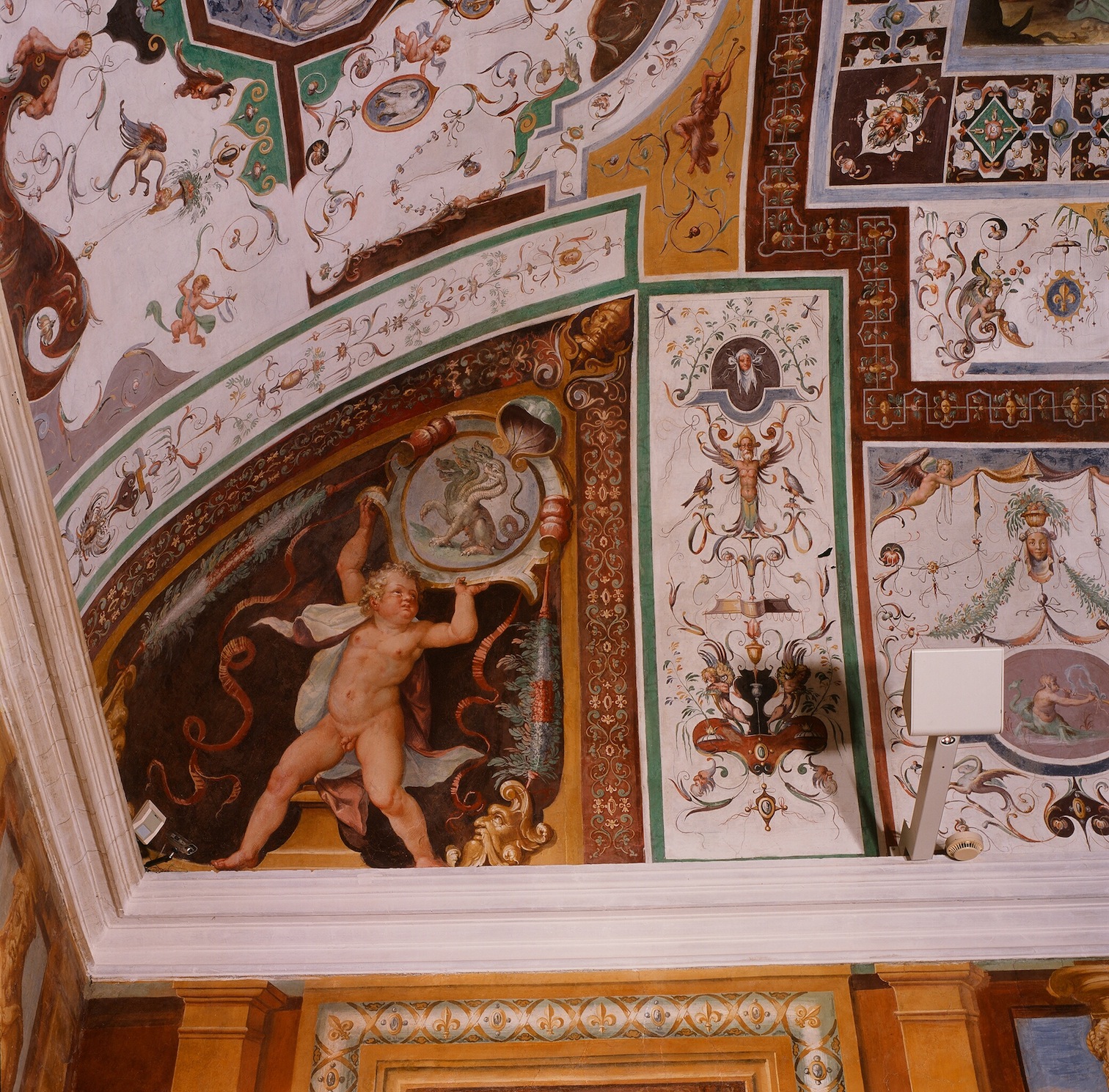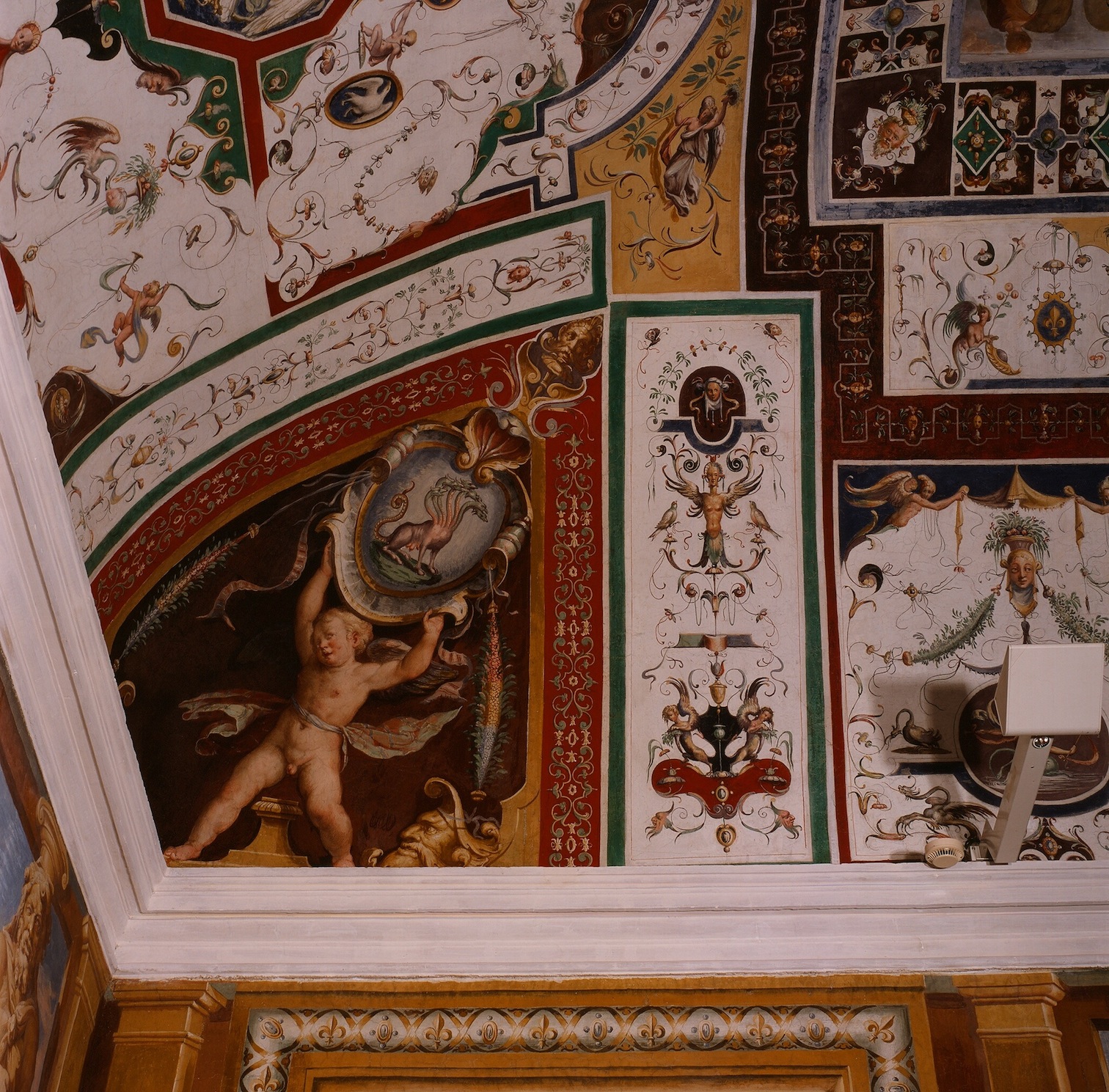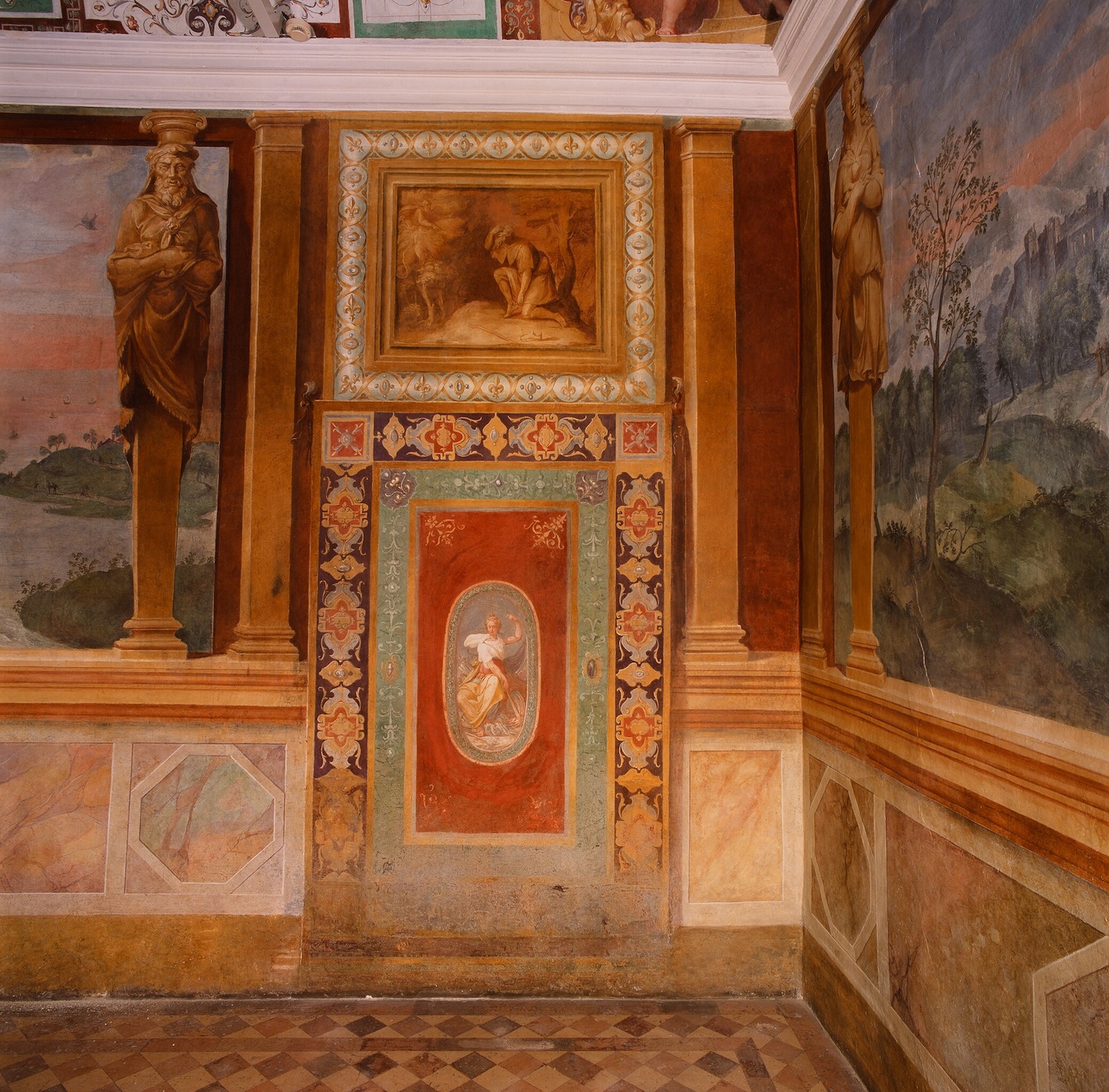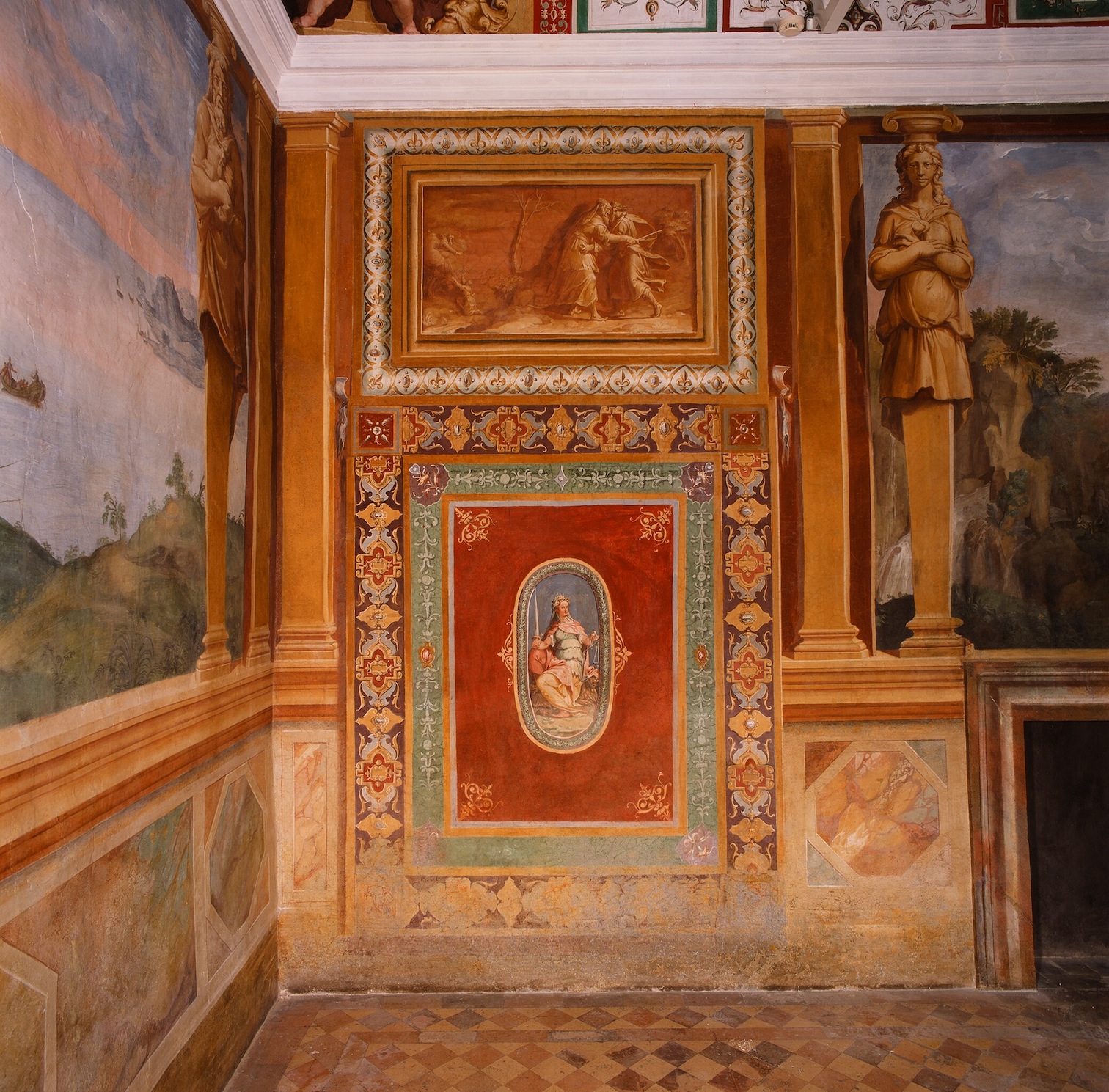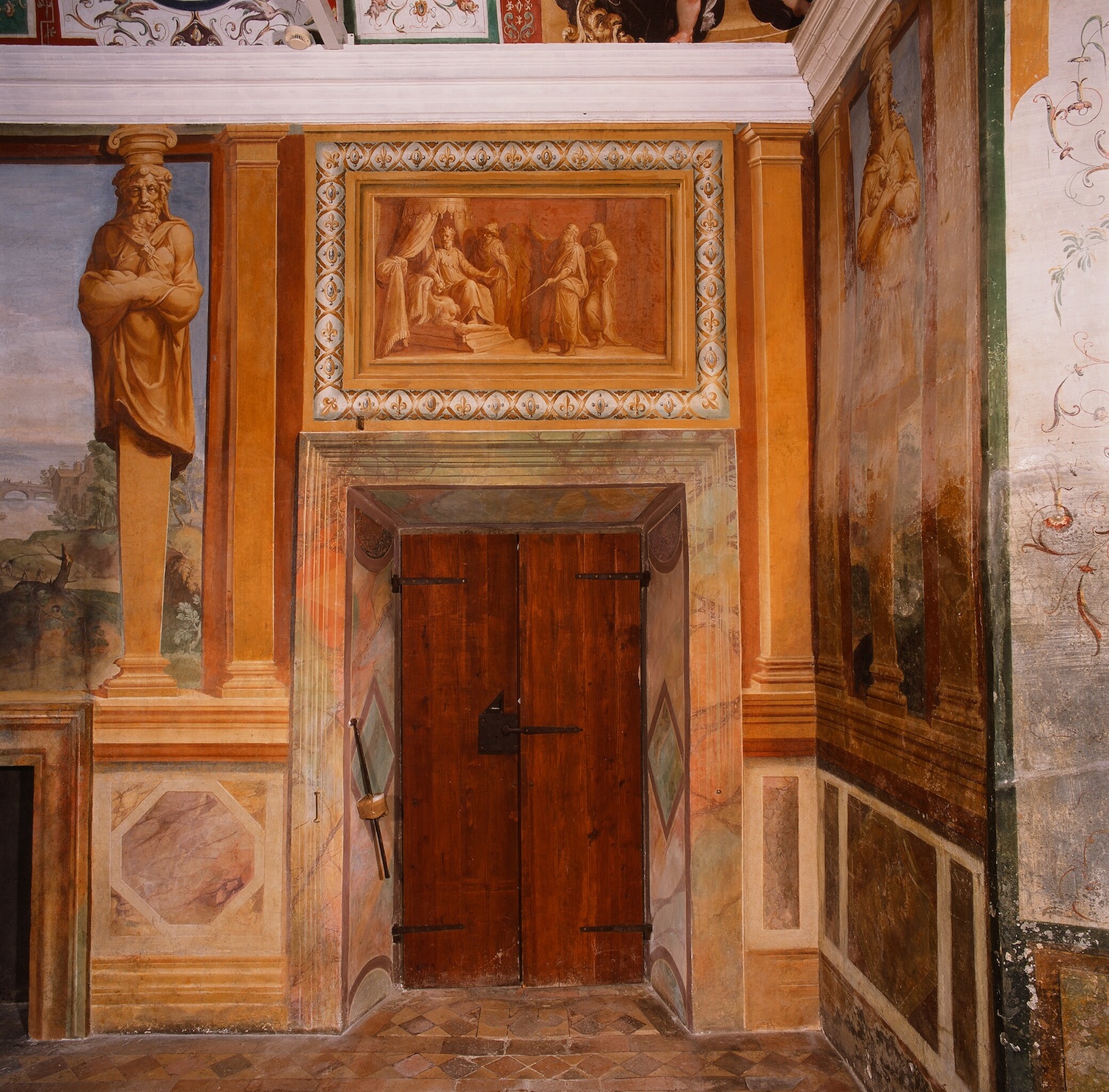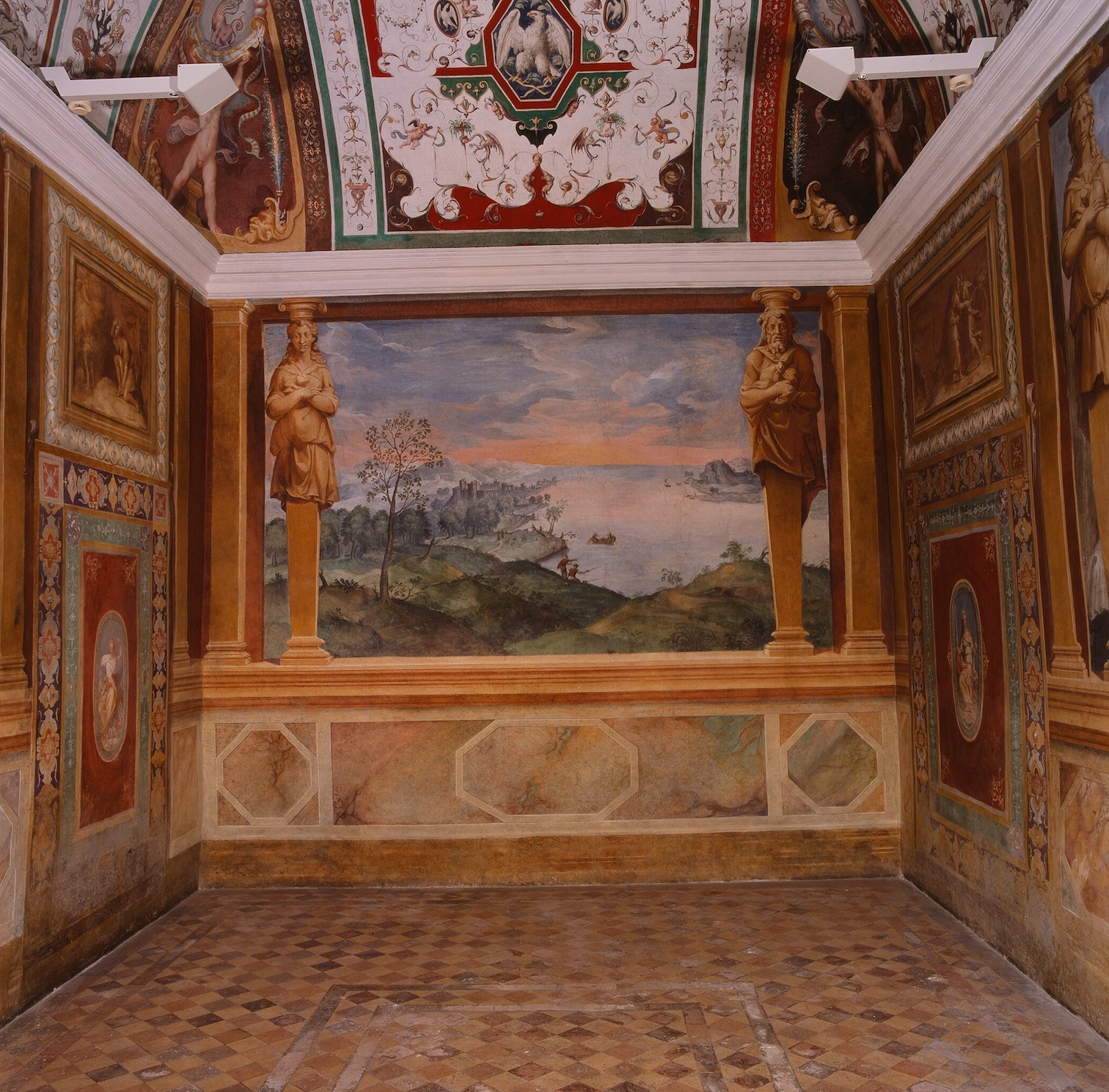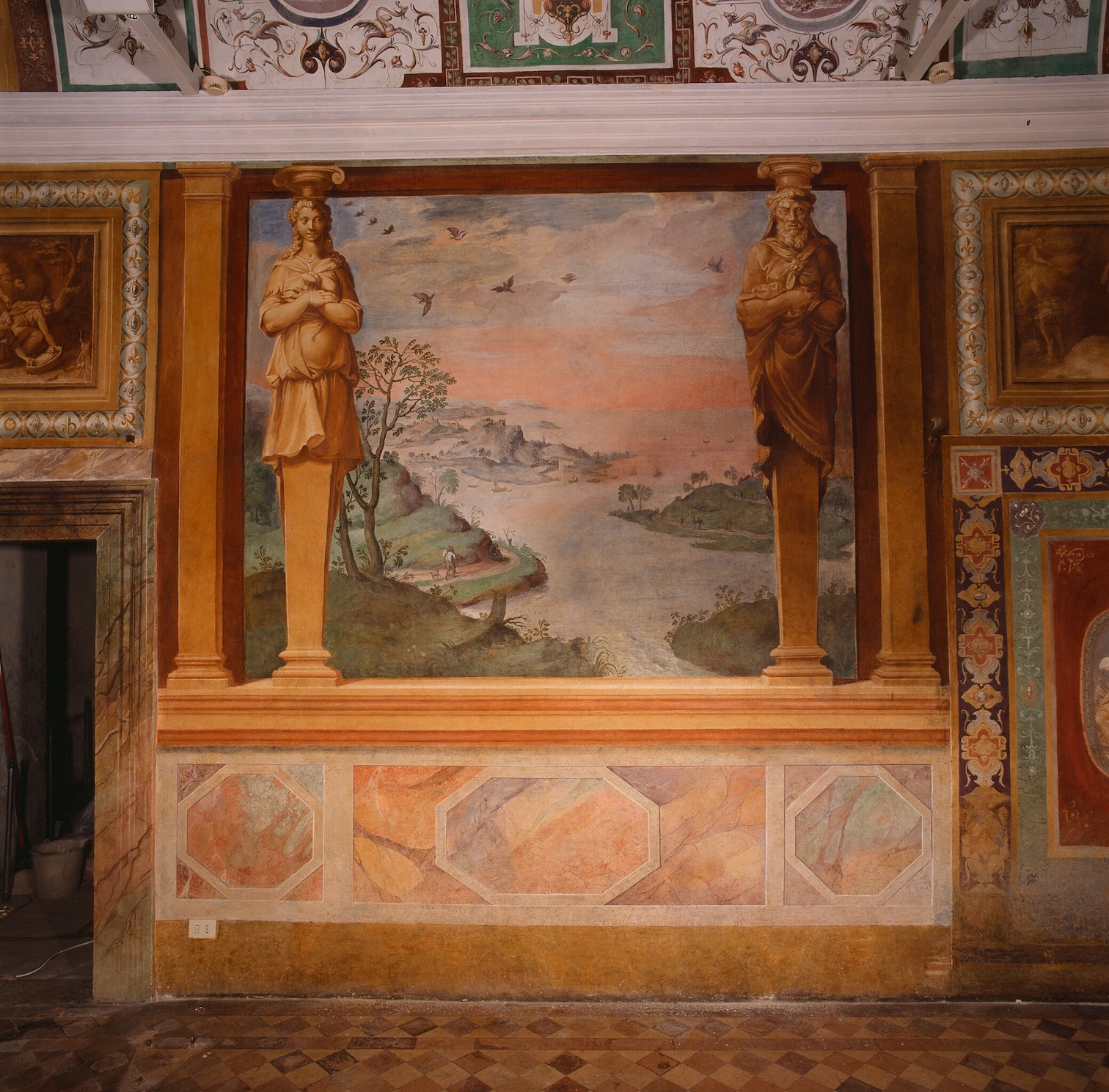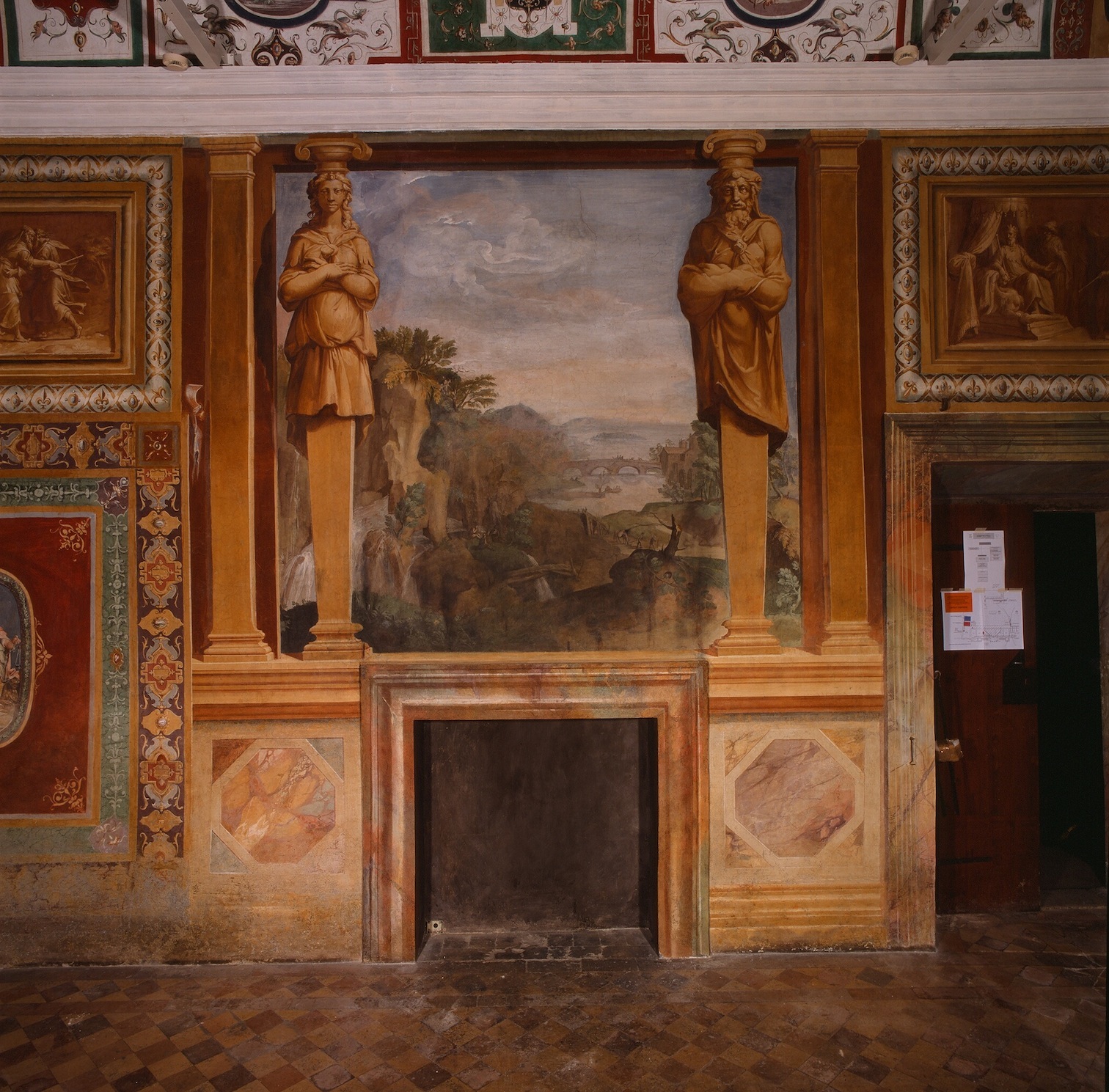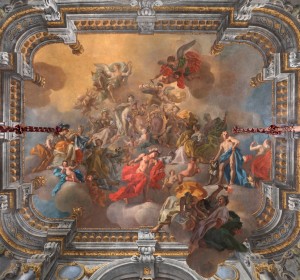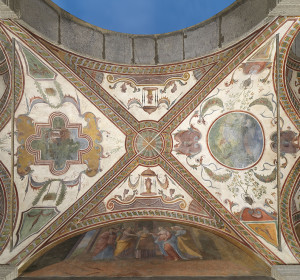Tivoli, Villa d’Este – Mosè Room
Date
Saturday September 24th, 2016
DATA SHEET
AUTHOR:
Girolamo Muziano
DATING:
The second half of century XVI
LOCATION:
Tivoli, Villa d’Este, Mosè Room
CUSTOMER:
Superintendence for the Artistic and Historical Heritage Lazio – Dr. Dora Catalan
INTERVENTION DATING:
06/03/2013 – 30/10/2013
THE PROBLEM
All the frescos of the vault and of the walls showed damaged caused by moisture infiltration especially due to a capillary rise. Many events of de-cohesion and a lack of adhesion of the paint layer and also of preparatory layers, as well as the presence of bio-deteriogens, particularly interested the walls. All the surfaces (walls and vaults) were overshadowed by consistent surface deposits, altered fixatives, unsuitable material plasters and repainting of different nature, due to past interventions. It is unclear whether the lack of surfaces finishing touch, evident on some portions of the decoration, is due to a problem with the partially dry execution technique, to the lack of a finishing step, or to the thoughtless removal done during the previous interventions.
THE METHOD
Villa d’Este was erected and decorated by Cardinal Ippolito d’Este in the second half of the sixteenth century. Among the frescoed rooms of the aristocrat apartment, on the vault of the “Room of Moses”, the representation of Moses who makes water flow quenching Jews thirst while escaping from Egypt, is the allegory of the Cardinal Ippolito who realized the pipeline system in order to draw water from the mountains.
The restoration of the room was an occasion for a relief and an accurate study of the executive technique of painting on both the vault and the walls.
The consolidation of preparatory layers and painting layer was followed by a gradual and selective cleaning from deposits and altered or unsuitable substances overlapped during previous restorations. Cleaned surfaces were then chromatically filled and rebalanced, in order to restore readability to decorative images.
